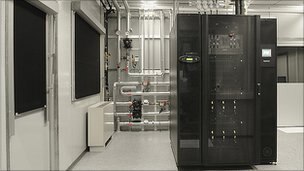Supercomputers have always been given a bad rap. Not for the amount of data they can process but for the amount of power they consume, and the heat they generate. Typically the building these computers are housed in costs less than what it costs to cool them. However new research from IBM’s Zurich lab plan on reducing the heat problem by ‘stacking’ the processors. Let me explain; the CPU’s will be stacked on top of each other with a thin layer of water flowing between them thereby reducing the cost it takes to cool each CPU. Dr Bruno Michel and his team from the Zurich lab have built a prototype called Aquasar to test this theory. The computer, the size of large refrigerator, clocks 1.1 billion computational operations per second at a cost of 1 watt of power, almost doubling the operations of some of the world’s fastest supercomputers. The only problem left is to reduce the computers size to that of a sugar cube. "We currently have built this Aquasar system that's one rack full of processors. We plan that 10 to 15 years from now, we can collapse such a system in to one sugar cube - we're going to have a supercomputer in a sugar cube." said Dr. Michel. To effectively cool the supercomputer in its miniature size the team is looking towards the way human vascular system works to cool down the human body. Basically placing ‘water channels’ a hairs width in size, in strategic locations between the stacked processors. For more information on IBM’s demonstration and theories download the PDF: HERE.
Eavesdropper

